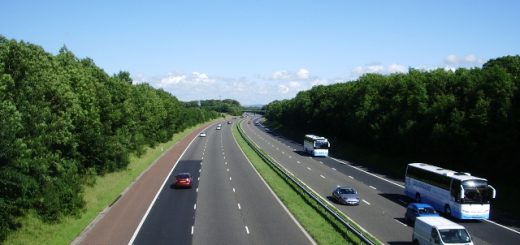Caractacus Stone
This standing stone has a number of traditions associated with it, it looks very much like a Neolithic standing stone, although sources suggest that it actually dates to the fifth century, during the end of the Roman occupation. The name of the stone is certainly of Roman origin although it may have been old during the Roman period.
![Matt Neale from Leicester, UK [CC BY-SA 2.0 (https://creativecommons.org/licenses/by-sa/2.0)], via Wikimedia Commons](http://www.mysteriousbritain.co.uk/wp/wp-content/uploads/2018/11/Caratacus_Stone_Exmoor_lit_from_above-201x300.jpg) One legend suggests that there is treasure buried beneath the stone, and one day a local Carter tried to dig for the treasure, but was crushed to death when the stone fell on him. His ghost is said to haunt the spot, making an appearance on dark and misty nights. The tradition of buried treasure is a common folklore motif, and so is the fate of the carter, as in many tales those who search for fabled treasure come to a sticky end.
One legend suggests that there is treasure buried beneath the stone, and one day a local Carter tried to dig for the treasure, but was crushed to death when the stone fell on him. His ghost is said to haunt the spot, making an appearance on dark and misty nights. The tradition of buried treasure is a common folklore motif, and so is the fate of the carter, as in many tales those who search for fabled treasure come to a sticky end.
In other stories the site is haunted by a wagon and horses and their phantom driver.




Re: Caractacus Stone
The name "Caractacus is only Roman insofar as it is the Latin version of "Caradoc", an ancient British chieftain who led resistance against the Romans and was eventually captured and paraded through the streets of Rome. He was the son of another famous chieftain, Cunobelinus, from whom I took my handle. It wouldn’t surprise me if therefore there are legends associated with Caractacus told about this stone.
Re: Caractacus Stone
I have just read online, following my previous comment, that the stone takes its name from a Latin inscription in the base of the stone which reads "CARA(T)ACI NEPVS", meaning "a descendantof Caractacus, indicating that the stone could have been dedicated by or to someone who believed themselves to be of Caractacus’ bloodline.